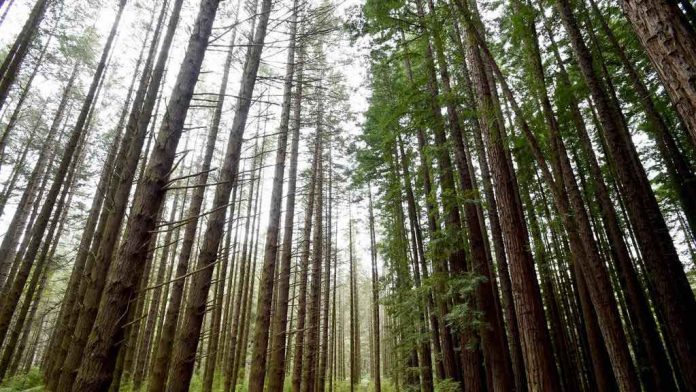Scientists are developing ways to use cue from plant life to find human bodies in wooded areas.
Search teams looking for human remains are often slowed by painstaking on-foot pursuits or aerial searches that are obscured by forest cover. In a Science & Society article appearing September 3 in the journal Trends in Plant Science, the authors discuss utilizing tree cover in body recovery missions to our advantage, by detecting changes in the plant’s chemistry as signals of nearby human remains. Though the impact of human decomposition on plants has not yet been thoroughly explored, the researchers outline the steps needed to make body recovery using vegetation more of a reality.
“In smaller, open landscapes foot patrols could be effective to find someone missing, but in more forested or treacherous parts of the world like the Amazon, that’s not going to be possible at all,” says senior author Neal Stewart Jr., a professor of plant sciences at the University of Tennessee. “This led us to look into plants as indicators of human decomposition, which could lead to faster, and possibly safer body recovery.”
Research into the relationship between plants and human decomposition will take place on the University of Tennessee’s “body farm.” Officially known as the Anthropology Research Facility, this is where scientists examine the process of human body decay under different conditions. There, investigators will assess how “cadaver decomposition islands”—the zone immediately surrounding humans remains—change the nutrient concentrations of the soil, and how those changes manifest in the nearby plants.
“The most obvious result of the islands would be a large release of nitrogen into the soil, especially in the summertime when decomposition is happening so fast,” Stewart says. “Depending on how quickly the plants respond to the influx of nitrogen, it may cause changes in leaf color and reflectance.”
However, other large mammals, like deer, may also die in the places people go missing. So, one hurdle the research must overcome is finding metabolites specific to the breakdown of humans. As humans typically have non-wild diets, there may be specific metabolites, like those from drugs or food preservatives, that have specific influences on plant appearance. “One thought is if we had a specific person who went missing who was, let’s say, a heavy smoker, they could have a chemical profile that could trigger some sort of unique plant response making them easier to locate. Though at this stage this idea is still farfetched,” Stewart remarks.
Once the influences of cadaver metabolites on plants are better understood, search teams could develop imagers to scan plants for specific fluorescence or reflectance signals that indicate human remains are close by. While some of this technology already exists, scientists still need to know which species of plant and the appropriate signals to look for. “We’ve actually built a whole plant imager that can analyze fluorescence signatures,” says Stewart. “But the first steps are going to be very fine scale, looking at individual leaves and measuring how their reflectance or fluorescence changes over time when plants are near human remains.” Once diagnostic spectra are compiled, researchers can begin to think about scaling up to drones and other tech that can analyze a wide stretch of area in a short time.
“When you start to think about deploying drones to look for specific emissions, now we can think of the signals more like a check engine light— if we can quickly fly where someone may have gone missing and collect data over tens or even hundreds of square kilometers, then we’d know the best spots to send in a search team,” Stewart remarks.
While these ideas are exciting, we are still several years away from feasibly using plants as search tools in body recovery missions. In the meantime, a collaborative team of botanists, anthropologists, and soil scientists will begin working at the body farm, designing their first set of plant-cadaver experiments.















